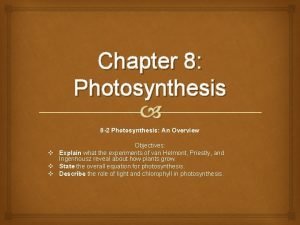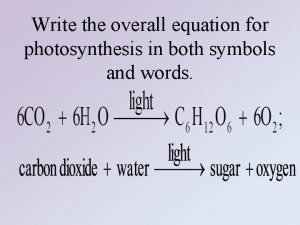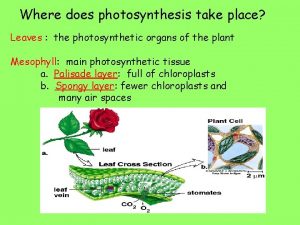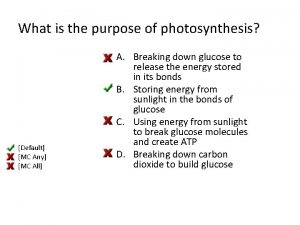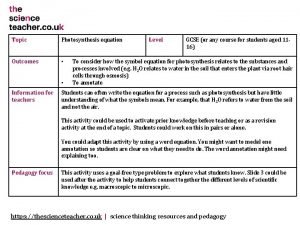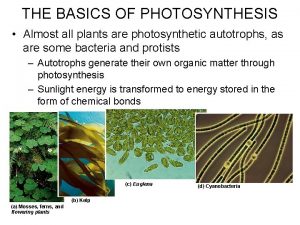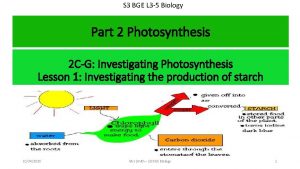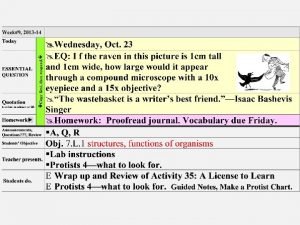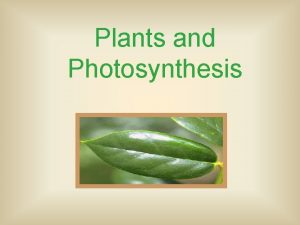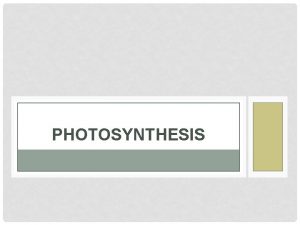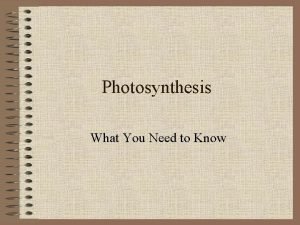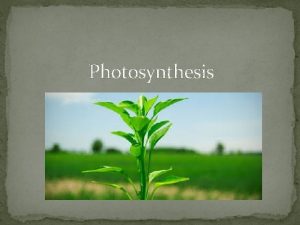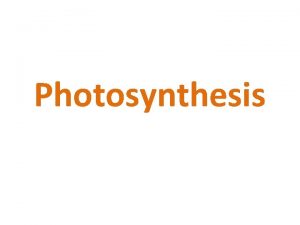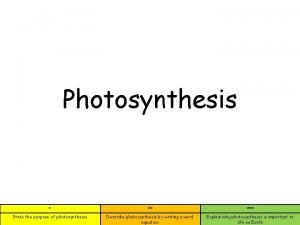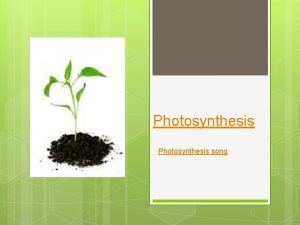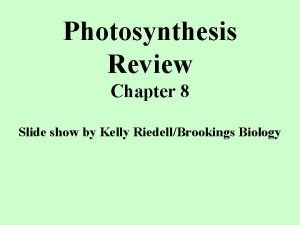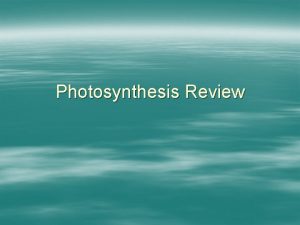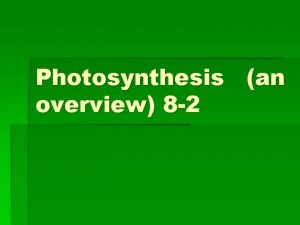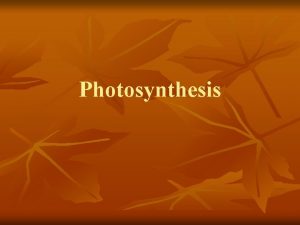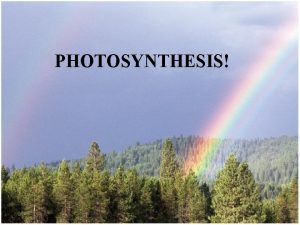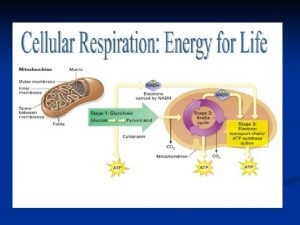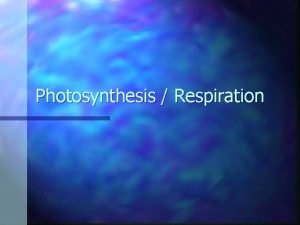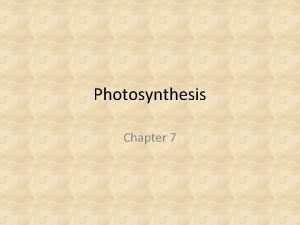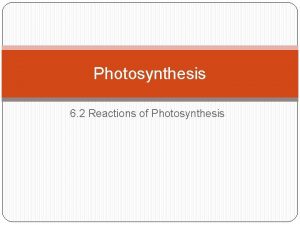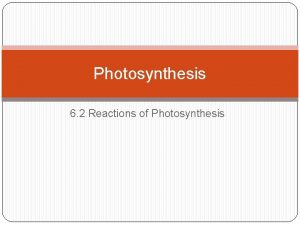Lesson Overview Photosynthesis An Overview Lesson Overview 8





















- Slides: 21

Lesson Overview Photosynthesis: An Overview Lesson Overview 8. 2 Photosynthesis: An Overview

Lesson Overview Photosynthesis: An Overview THINK ABOUT IT Ø How would you design a system to capture the energy of sunlight and convert it into a useful form? Ø Plants have solved these issues—and maybe we can learn a trick or two from them.

Lesson Overview Photosynthesis: An Overview Light Ø Energy from the sun travels to Earth in the form of _____. Ø Sunlight is a mixture of different ______, many of which are visible to our eyes and make up the _______.

Lesson Overview Photosynthesis: An Overview Light Ø Our eyes see the different wavelengths of the visible spectrum as different colors: red, orange, yellow, green, blue, indigo, and violet.

Lesson Overview Photosynthesis: An Overview Pigments Ø Plants gather the sun’s energy with lightabsorbing molecules called _____. Ø The plants’ principal pigment is ________.

Lesson Overview Photosynthesis: An Overview Pigments Ø The two types of chlorophyll found in plants, ______and ______, absorb light very well in the blue-violet and regions of the visible spectrum, but not in the green region, as shown in the graph. Ø Leaves ____ green light, which is why plants look green.

Lesson Overview Photosynthesis: An Overview Pigments Ø Plants also contain red and orange pigments such as _____ that absorb light in other regions of the spectrum.

Lesson Overview Photosynthesis: An Overview Pigments Ø Most of the time, the green color of the chlorophyll overwhelms the other pigments, but as _______ drop and chlorophyll molecules break down, the red and orange pigments may be seen.

Lesson Overview Photosynthesis: An Overview Chloroplasts Ø Photosynthesis takes place inside organelles called ________. Ø Chloroplasts contain saclike photosynthetic membranes called _______, which are interconnected and arranged in stacks known as ______.

Lesson Overview Photosynthesis: An Overview Chloroplasts Ø Pigments are located in the thylakoid ______. Ø The fluid portion outside of the thylakoids is known as the ______.

Lesson Overview Photosynthesis: An Overview Energy Collection Ø Because light is a form of ____, any compound that absorbs light absorbs energy. Chlorophyll absorbs visible light especially well. Ø When chlorophyll absorbs light, a large fraction of the light energy is transferred to _____. These high-energy electrons make photosynthesis work.

Lesson Overview Photosynthesis: An Overview High-Energy Electrons Ø The high-energy electrons produced by chlorophyll are highly reactive and require a special “_____. ”

Lesson Overview Photosynthesis: An Overview High-Energy Electrons Ø Think of a high-energy electron as being similar to a hot potato. If you wanted to move the potato from one place to another, you would use an oven mitt—a ____—to transport it. Ø Plants use electron carriers to _____ high-energy electrons from chlorophyll to other ______.

Lesson Overview Photosynthesis: An Overview High-Energy Electrons Ø ____(nicotinamide adenine dinucleotide phosphate) is a carrier molecule. Ø NADP+ accepts and holds ____ high-energy electrons, along with a ________(H+). In this way, it is converted into ______. Ø The NADPH can then carry the high-energy electrons to ____________elsewhere in the cell.

Lesson Overview Photosynthesis: An Overview of Photosynthesis Ø Photosynthesis uses the energy of sunlight to convert water and carbon dioxide into high-energy _______ and _______. In symbols: In words:

Lesson Overview Photosynthesis: An Overview of Photosynthesis Ø Plants use the ______ generated by photosynthesis to produce ______________ such as starches, and to provide energy for the synthesis of other compounds, including ____ and ______.

Lesson Overview Photosynthesis: An Overview Light-Dependent Reactions Ø Photosynthesis involves two sets of reactions. Ø The first set of reactions is known as the _____________ because they require the direct involvement of light and light-absorbing pigments.

Lesson Overview Photosynthesis: An Overview Light-Dependent Reactions Ø The light-dependent reactions use energy from sunlight to produce ______ and _____. Ø These reactions take place within the _____ membranes of the chloroplast.

Lesson Overview Photosynthesis: An Overview Light-Dependent Reactions Ø _______ is required as a source of electrons and hydrogen ions. ____ is released as a byproduct.

Lesson Overview Photosynthesis: An Overview Light-Independent Reactions Ø Plants absorb ________from the atmosphere and complete the process of photosynthesis by producing ____ and other ________. Ø During _______________, ATP and NADPH molecules produced in the light-dependent reactions are used to produce high-energy sugars from carbon dioxide.

Lesson Overview Photosynthesis: An Overview Light-Independent Reactions Ø _____is required to power the light-independent reactions. Ø The light-independent reactions take place outside thylakoids, in the _____.
 Chapter 9 lesson 2 photosynthesis an overview
Chapter 9 lesson 2 photosynthesis an overview Section 8-2 photosynthesis an overview
Section 8-2 photosynthesis an overview Lesson overview
Lesson overview Word equation for photosynthesis
Word equation for photosynthesis Where does photosynthesis take place
Where does photosynthesis take place Purpose of photosynthesis
Purpose of photosynthesis Photosynthesis equation
Photosynthesis equation Inputs of light reactions in photosynthesis
Inputs of light reactions in photosynthesis Steps in photosynthesis
Steps in photosynthesis Photosynthesis word equation
Photosynthesis word equation Euglena amoeba paramecium
Euglena amoeba paramecium Autotrophs self-feeder
Autotrophs self-feeder How photosynthesis takes place
How photosynthesis takes place What happens during photosynthesis
What happens during photosynthesis Where does photosynthesis occur?
Where does photosynthesis occur? Chemiosmosis in photosynthesis
Chemiosmosis in photosynthesis Photosynthesis poem
Photosynthesis poem Equation for photosynthesis
Equation for photosynthesis Photosynthesis song
Photosynthesis song Chapter 8 photosynthesis vocabulary review
Chapter 8 photosynthesis vocabulary review The process of photosynthesis and cellular respiration
The process of photosynthesis and cellular respiration What's the equation for cellular respiration
What's the equation for cellular respiration

